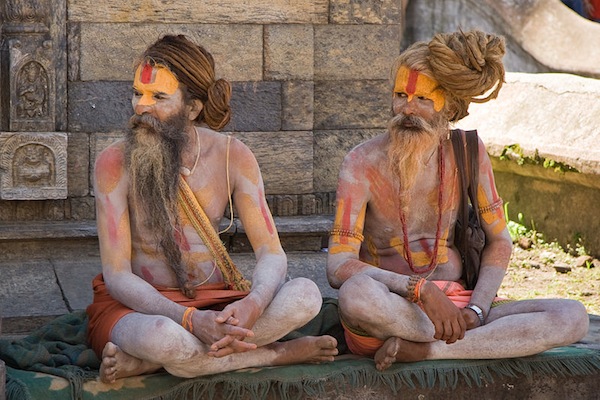
Tantra and Yoga are two ancient practices that originated in India and have been practiced for thousands of years. Both of these practices are closely related, and over time they have influenced and been influenced by each other. However, they are two distinct practices that have become independent of each other.
The word “tantra” is derived from two Sanskrit words – “tanoti” meaning expansion and “trayati” meaning liberation. Tantra is a spiritual practice that involves rituals, mantras, and visualization techniques to expand consciousness and achieve spiritual liberation. It is believed that tantra was originally a part of the Vedas, the ancient Hindu scriptures, but later became a separate practice.
On the other hand, “yoga” comes from the Sanskrit word “yuj” which means to unite. Yoga is a physical, mental, and spiritual practice that aims to unite the individual self with the universal consciousness. Yoga involves various physical postures, breathing techniques, and meditation to achieve a state of balance, harmony, and well-being.
The connection between tantra and yoga dates back to ancient times. In the early stages of yoga, the practice was primarily focused on meditation and spiritual practices. However, as yoga evolved, it began to incorporate physical postures. These physical postures were designed to prepare the body for meditation and spiritual practices leading to kundalini awakening and self realization as a consequence.
Over time, the practices of tantra and yoga became intertwined. Many yoga practitioners began to incorporate tantra practices into their yoga practice, and many tantric practitioners began to incorporate yoga practices into their spiritual practices. This led to the development of various forms of yoga, including Kundalini Yoga, which is based on tantric practices.
However, as the practices of tantra and yoga evolved, they began to develop independently. Yoga became more focused on physical postures, while tantra remained focused on spiritual practices. Today, yoga is widely practiced around the world, and there are many different forms of yoga, including Hatha Yoga, Ashtanga Yoga, and Vinyasa Yoga, to name a few. Tantra, on the other hand, is less widely practiced and is often associated with sexual practices (Mostly in western circles), which is a misunderstanding of the true nature of tantra. In India the ancient occult practices are still kept secret and preserved without much distortions.
What is Kundalini Yoga
Kundalini is often considered to be a central theme that unites tantra and yoga. Kundalini is the energy that lies dormant at the base of the spine, and when awakened, it rises up through the chakras to unite with the divine. This process is known as Kundalini awakening or Kundalini yoga.
Kundalini yoga (again not to be confused with western branding of Kundalini Yoga especially taught in Canada and USA) is a form of yoga that combines physical postures, breathing techniques, and meditation to awaken the Kundalini energy and bring it up through the chakras. This practice is based on the tantric understanding of the body’s energy system, and it aims to unite the individual self with the universal consciousness.
In many ways, Kundalini yoga is a synthesis of tantra and yoga. It incorporates the physical postures and breathing techniques of yoga, as well as the spiritual practices of tantra. It is a powerful practice that can bring about profound changes in the practitioner’s physical, mental, and spiritual well-being.
However, it is important to note that Kundalini yoga is just one form of yoga and one aspect of tantra. Both tantra and yoga have many different practices and techniques, and there is no one central theme that unites them. The connection between tantra and yoga is complex and multifaceted, and it has evolved over thousands of years of practice and tradition.
Kundalini Awakening is Central in Hatha Yoga
It is a fact that Hatha Yoga, which is one of the traditional branches of yoga, has always been associated with Kundalini awakening. Hatha Yoga is a physical practice that aims to purify and balance the body and mind in preparation for higher spiritual practices, including Kundalini Yoga.
Hatha Yoga includes a variety of physical postures (asanas), breathing techniques (pranayama), and meditation practices, which can help to awaken the dormant Kundalini energy that lies at the base of the spine. Hatha Yoga is often seen as a preparatory practice for Kundalini Yoga, as it helps to strengthen and purify the body and mind, making it more receptive to the powerful energy of Kundalini.
In the traditional Hatha Yoga texts, such as the Hatha Yoga Pradipika and the Gheranda Samhita, there are many references to Kundalini awakening and the practices that can help to facilitate it. These practices include specific asanas, pranayama techniques, and meditation practices, as well as the use of bandhas (energetic locks) and mudras (hand gestures).
However, it is important to note that Hatha Yoga is not just about Kundalini awakening. It is a complete system of physical, mental, and spiritual practices that can help to promote health, well-being, and spiritual growth. While Kundalini awakening is a central aspect of Hatha Yoga, it is not the only goal of the practice, and there are many other benefits to be gained from a regular Hatha Yoga practice.
Ultimately, the relationship between Yoga, Kundalini awakening and Tantra is complex and multifaceted, and it has evolved over thousands of years of practice and tradition. While Kundalini awakening has always been a central theme in Hatha Yoga, it is just one aspect of this rich and diverse practice.


